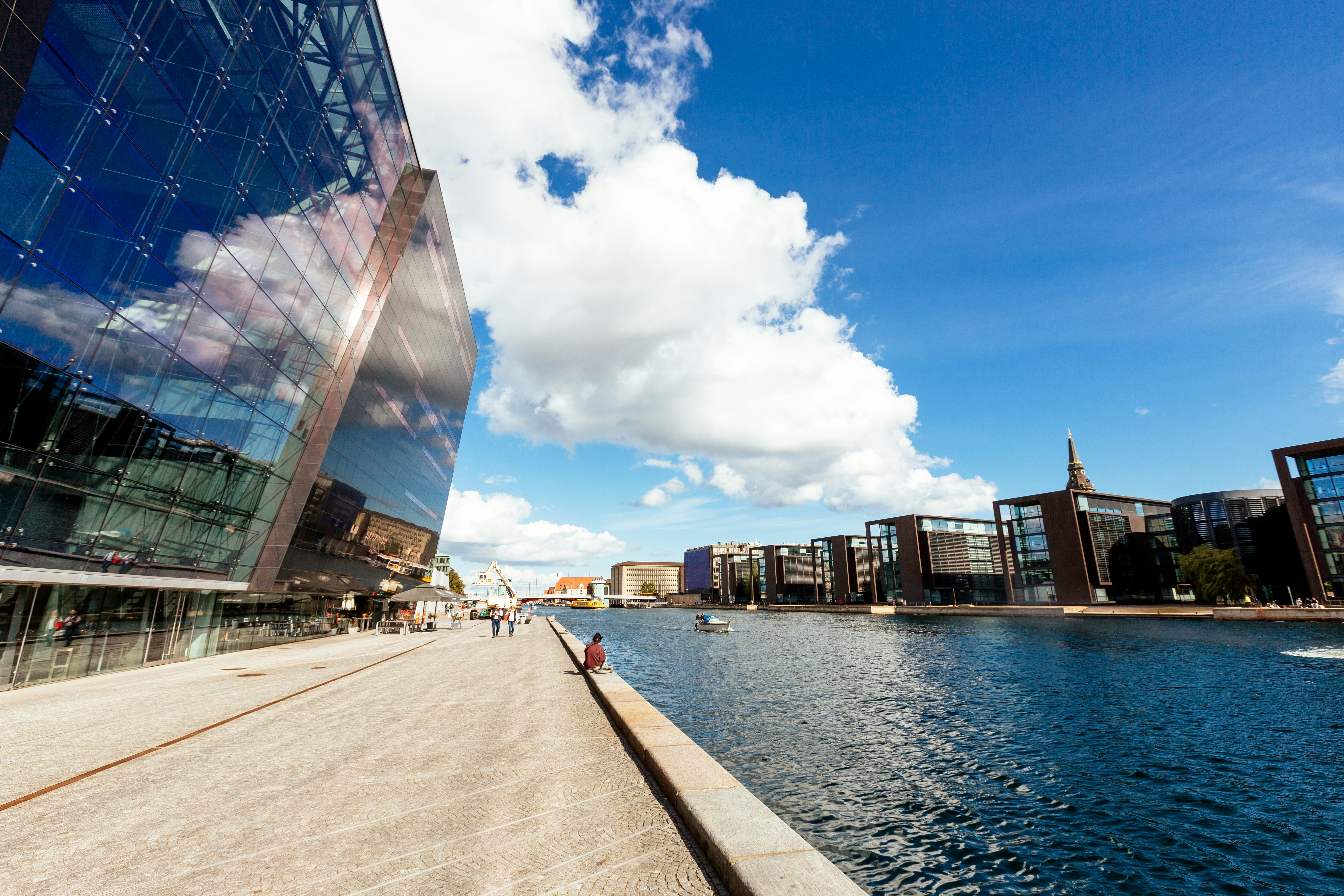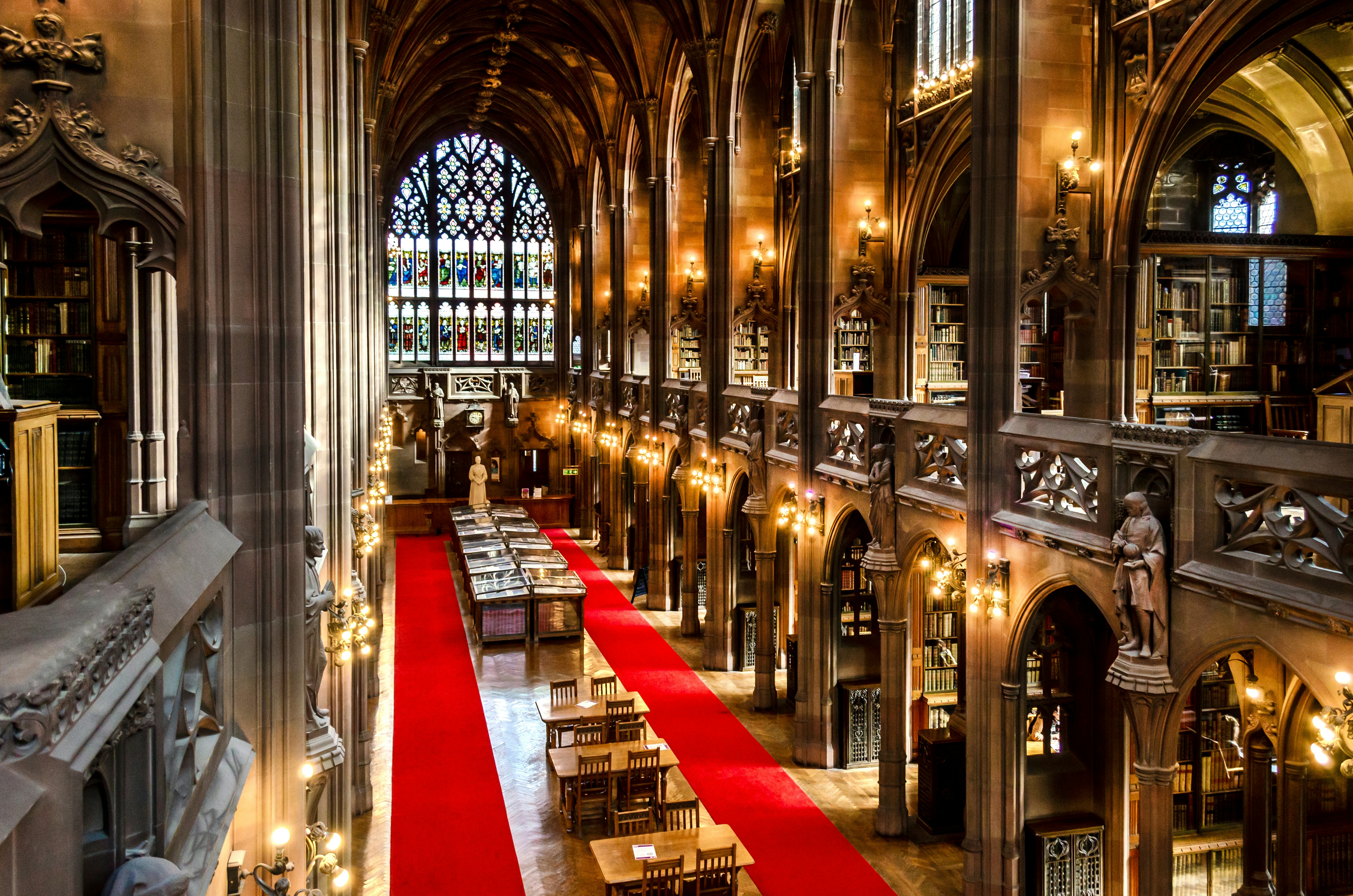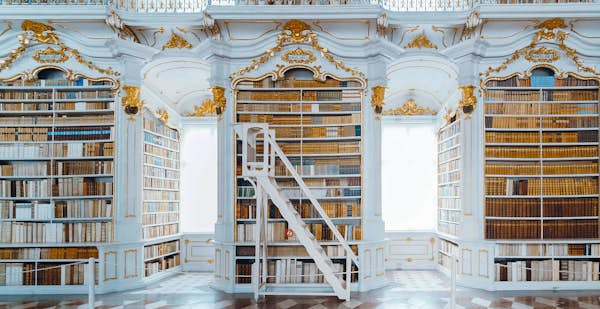Europe’s legendary libraries rank among some of the world’s most famous buildings. Many are historical landmarks, grand monuments to the importance of learning and the power of knowledge to society.
A list of our favorite libraries in Europe could run into the hundreds, but we’ve narrowed it down to lesser-known institutions that you’ll want to consider on your next travel itinerary.
Advertisement
Here is our pick of the most beautiful – and littlest known – libraries all over Europe.

1. Stadsbiblioteket, Stockholm, Sweden
Designed by architect Erik Gunnar Asplund and sporting a curvaceous reading room, Stadsbiblioteket is the finest example of Stockholm’s 1920s neoclassicist style. Visit the library – just a 15-minute walk north of the city center – as part of an afternoon in the relaxed Vasastan neighborhood, where you’ll find some of the best places to eat in Stockholm.

2. Warsaw University Library, Warsaw, Poland
In central Warsaw, Poland, the University Library dates to 1816, with its memorable new building inaugurated in 1999. Green trusses in the reading room and pink accents along a copper facade (now turned green by the elements) make the building both august and playful, while bushy ivy climbs its walls toward a terrace with four separate, equally lush gardens, adding another layer of nature. The library’s entrance contains blocks with writings in various languages, including a text by Plato in ancient Greek, and also one in ancient Polish. Inside, edification awaits.
Advertisement

3. Biblioteca Nazionale Marciana, Venice, Italy
A treasure among libraries in Italy, Venice’s Biblioteca Nazionale Marciana contains one of the most important collections of Greek, Latin and Asian manuscripts in the world. Designed by Jacopo Sansovino and completed in the 1500s, the building is located off Piazza San Marco, with an elegant and somewhat unusual style for the period. Its reading rooms are adorned with murals by Titian and Tintoretto, among other famous Venetian artists.

4. Det Kongelige Bibliotek (Royal Danish Library), Copenhagen, Denmark
Known as “the Black Diamond,” Det Kongelige Bibliotek – or the Royal Danish Library – in Copenhagen is a contemporary jewel indeed. Built in 1999 as an extension of a historic institution, the library is in the heart of the Danish capital and is one of its most significant architectural additions of recent decades. With its rigorous geometry and glossy granite-and-glass surfaces, the black cube is mesmerizing on the outside; the inside brings twisting shapes, wide spaces and escalators that connect multiple levels.
The building is also home to the National Museum of Photography, plus a bookshop, cafe and restaurant. Guided English-language tours of the library run weekly.

5. Wirtschaftsuniversität Bibliothek, Vienna, Austria
With its stunning baroque opulence, the beautiful national library in Vienna, Austria, is familiar to many. Yet for those travelers seeking a more modern mode of literary monument, the library at Vienna’s University of Economics and Business is a must-see. Parts of the site were first built in 1898, and the library was fully and boldly renovated by Zaha Hadid Architects following a fire in 2005. With their kinetic, fluid forms and bright lighting, the library’s innovative interiors seem to take you into another dimension. One side of the complex ends in a dramatic cantilever over the plaza below, beckoning you up to a higher level of learning.

6. John Rylands Library, Manchester, UK
Founded by the widow of a local philanthropist, the library of the University of Manchester (the UK’s largest) welcomes over three million students, researchers and visitors per year. Designed by architect Basil Champneys in the late 19th century, the neo-Gothic building is located on Deansgate in the heart of Manchester and houses an extensive catalog of books, including many in special collections. With its high columns and vaulted ceiling complete with intricate decorations, the spectacular (and very photogenic) reading room signals that the act of reading achieves a spiritual significance.

7. Oodi, Helsinki, Finland
Inaugurated at the end of 2018, the striking Oodi in Helsinki looks from some angles like a set of waves; from others, like a futuristic ship. The centerpiece of the 37-branch Helsinki City Library, the three-story structure is made entirely of glass and wood, making it – in the tradition of superb Finish architecture – a triumph of sustainability. Here, you can study, work, visit with friends and attend organized events.

8. Stiftsbibliothek Admont, Admont, Austria
In Admont, in the geographic heart of Austria, lies the largest monastery library in the world. The building was completed in 1776 in high baroque style – think swooping cornices, cherubs and gilded surfaces. Seven ceiling frescoes by Bartolomeo Altomonte continue the opulence on a theme of “spirit of the enlightenment.” Particularly beautiful are the four bronze statues in the corners of the main hall, representing death, the resurrection, hell and paradise.

